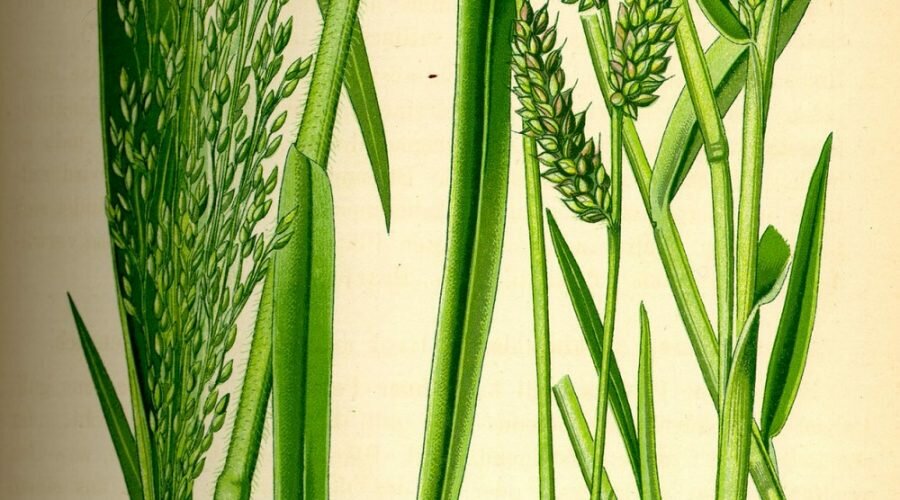Archaeologists have unearthed the earliest definitive evidence of broomcorn millet (Panicum miliaceum) in ancient Iraq, challenging our understanding of humanity’s earliest agricultural practices.
Multi-cropping — the seasonally sequential production of multiple crops on the same land in the same year — is an agricultural technique aimed at diversifying and intensifying economic and subsistence-based food, fodder, and forage production.
Similar to the contemporary world, this form of agricultural production was vital for provisioning large urban centers and financing imperial ambitions across ancient Eurasia.
In Southwest Asia, multi-cropping, in which grain, fodder, or forage could be reliably cultivated during dry summer months, only became possible with the translocation of summer grains, like millet, from Africa and East Asia.
Despite some textual sources suggesting millet cultivation as early as the third millennium BCE, the absence of robust archaeobotanical evidence for millet in semi-arid Mesopotamia (ancient Iraq) has led most archaeologists to conclude that millet was only grown in the region after the mid-first millennium BCE introduction of massive, state-sponsored irrigation systems.
“Overall, the presence of millet in ancient Iraq during this earlier time period challenges the accepted narrative of agricultural development in the region as well as our models for how ancient societies provisioned themselves,” said Elise Laugier, an environmental archaeologist and National Science Foundation postdoctoral fellow in the School of Arts and Sciences at Rutgers University-New Brunswick.
Broomcorn millet is an “amazingly robust, quick-growing and versatile summer crop” that was first domesticated in East Asia, Laugier added. The researchers analyzed microscopic plant remains (phytoliths) from Khani Masi, a mid-late second millennium BCE (c. 1500-1100 BCE) site in the Kurdistan region of Iraq.
“The presence of this East Asian crop in ancient Iraq highlights the interconnected nature of Eurasia during this time, contributing to our knowledge of early food globalization,” Laugier said. “Our discovery of millet and thus the evidence of summer cultivation practices also forces us to reconsider the capacity and resilience of the agricultural systems that sustained and provisioned Mesopotamia’s early cities, states and empires.”
The discovery of broomcorn millet in ancient Mesopotamia was surprising for environmental and historical reasons. Until now, researchers thought that millet wasn’t grown in Iraq until the construction of later 1st millennium BCE imperial irrigation systems.
Millet generally requires summer precipitation to grow, but Southwest Asia has a wet-winter and dry-summer climate, and agricultural production is based almost entirely on crops grown during the winter, such as wheat and barley.
The new evidence that crops and food were, in fact, grown in summer months means that previous studies likely vastly under-appreciated the capacities and resilience of ancient agricultural food-system societies in semi-arid ecosystems.
The new study is also part of growing archaeological research showing that in the past, agricultural innovation was a local initiative, adopted as part of local diversification strategies long before they were used in imperial agricultural intensification regimes — new information that could have an impact on how agricultural innovations move forward today.
“Although millet isn’t a common or preferred food in semi-arid Southwest Asia or the United States today, it is still common in other parts of Asia and Africa,” Laugier said.
“Millet is a hearty, fast-growing, low-water requiring and nutritious gluten-free grain that could hold a lot of potential for increasing the resilience capacities of our semi-arid food systems. Today’s agricultural innovators should consider investing in more diverse and resilient food systems, just as people did in ancient Mesopotamia.”
Sources:

